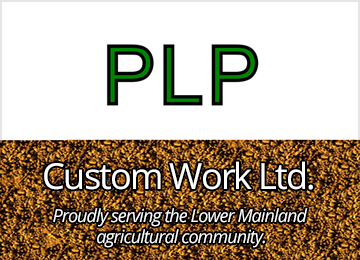Pasture Raised
by: Jillian Robbins
Thirteen years ago my dad had an urge to try something different. During the previous 15 years, my parents farmed vegetables, pigs, and raspberries. After visiting a Free Range poultry operation near Victoria, my father decided to go back to his livestock roots and start Free Range poultry.
Our pasture raised poultry operation started with 50 chickens (approx. 200kgs) under a tarped shelter in the field being sold mainly to family and friends. The first goal was to raise them in their natural habitat – outside on pasture. The birds graze and forage for bugs, grubs, grass, leaves and seeds. They also have access to a vegetarian grain diet with no additives or animal by-products. The second goal was to grow the chickens and turkeys closer to full-size. Our chicken roasters range from 6lbs to 8lbs and turkey hens from 20lbs to 25lbs. Sales quickly grew, and today, we manage 20,000 kilograms of chicken quota and 15,000 kilograms of turkey quota which are raised during an eight month growing season on a seven acre farm. Turkeys are available fresh for Thanksgiving and Christmas and chickens are available fresh five times during the summer months. We do not raise birds over the winter months.
Our birds are sold direct from our on-farm store, through small meat markets, and at selected farmers markets. 90% of chicken is sold on-farm and 10% at farmers markets. 60% of turkeys are sold to meat markets, 30% on-farm and 10% at farmers markets.
Growing poultry outdoors has its challenges. Coyotes, hawks, owls and eagles like our chickens and turkeys. The flight predators do not like our other large animals in the fields and coyotes do not like electricity. The perimeter fence around the farm has an electric wire that discourages coyotes and if one of our two llamas or two donkeys is in the pasture with the poultry, the hawks and owls keep their distance. Flashy tape also helps confuse curious eagles.
The other big challenge to all direct market livestock producers is processing. Processing costs are similar to the costs to feed chickens, so it is important to have a good relationship with an inspected processing facility. It also means the farmer must develop a market for all parts of their birds – not just the parts in highest demand. We are adding a kitchen facility to diversify our products.
We serve a small niche market. Our success and future growth depends on how well we meet the expectations of the market. We are constantly evolving with new products. We provide samples on our sales days and a web presence that encourages new customers. All our customers have a story about why they have chosen to drive out for pasture raised poultry, grown the same way and with the same great taste as their farming ancestors. Many of our new customers come after tasting our poultry at a friend’s house. As well, our customers are encouraged to visit us on the farm during our growing season and go “walking with the turkeys.” It is a mutual relationship and we continue to grow in our understanding of our market with each customer interaction.












